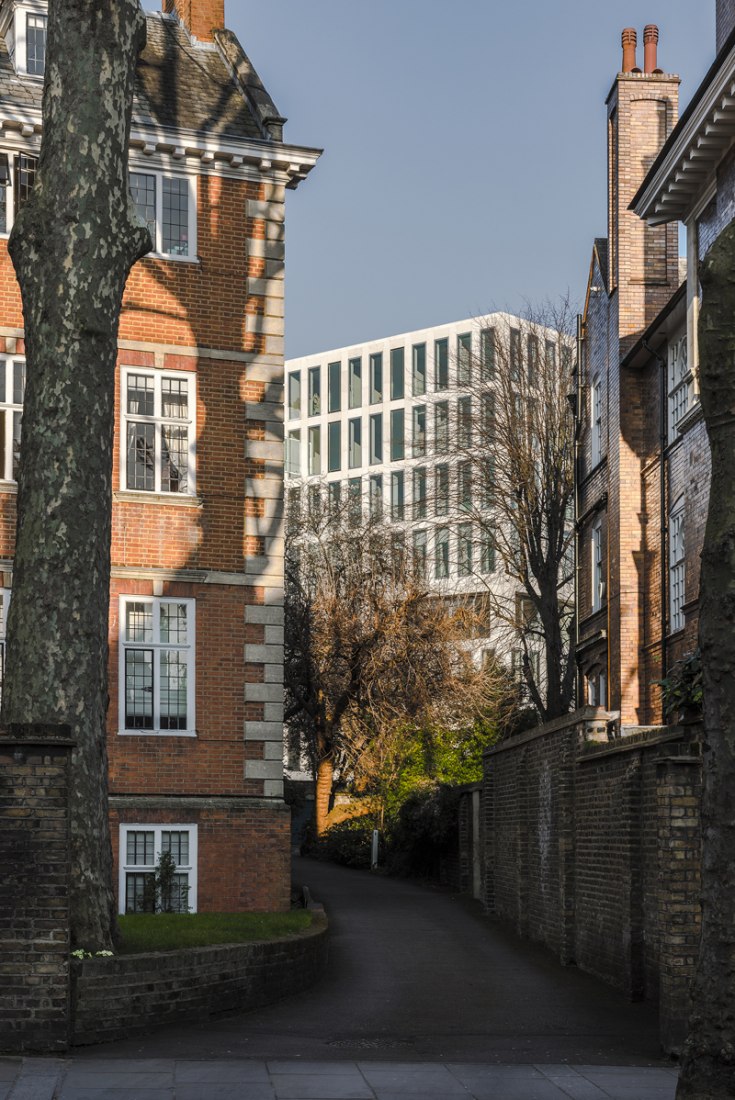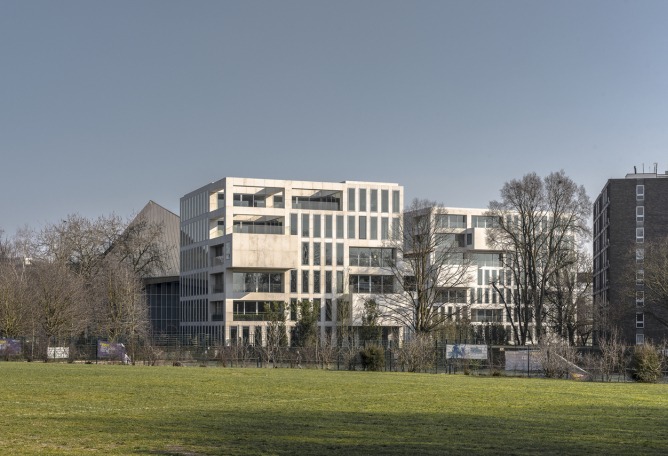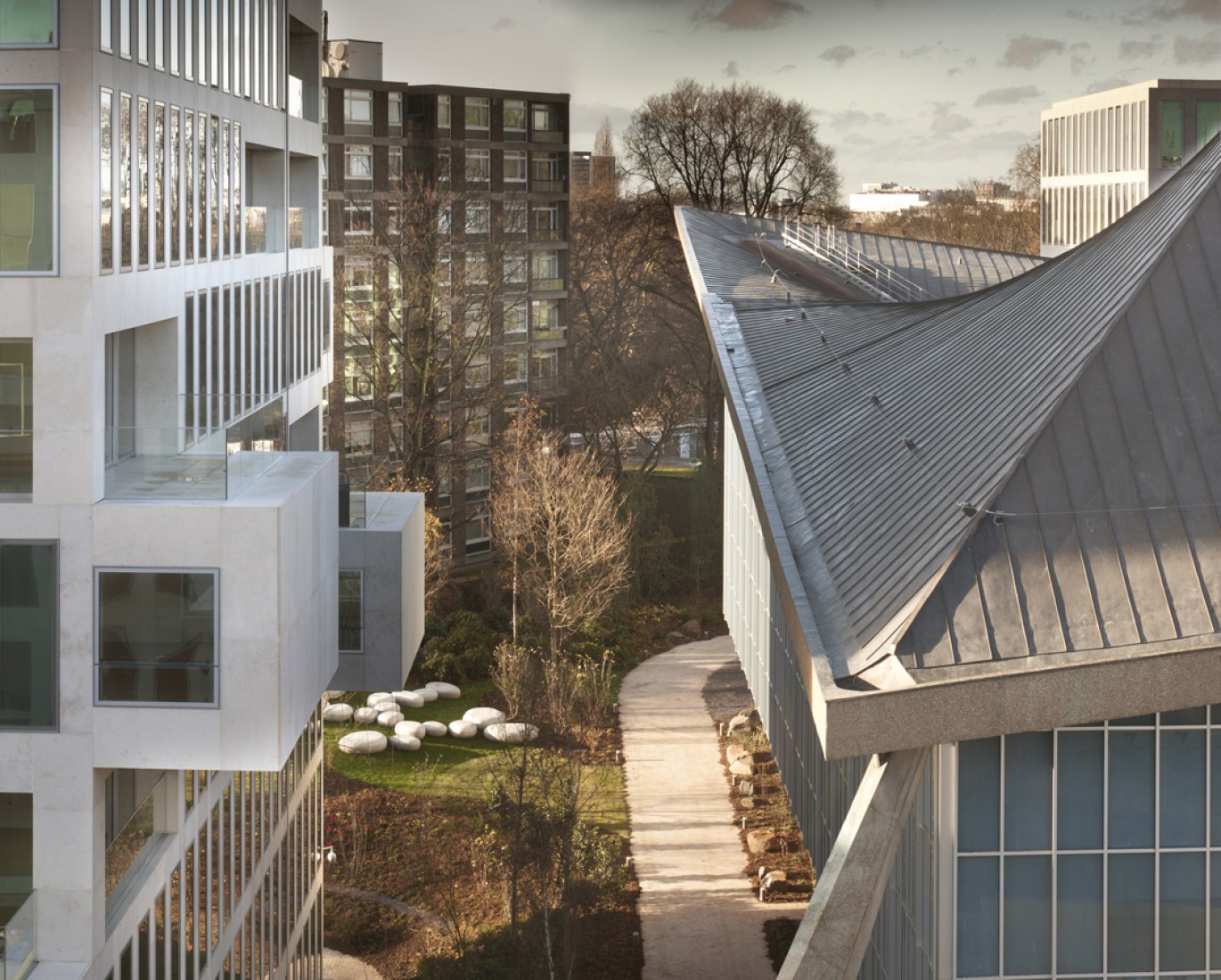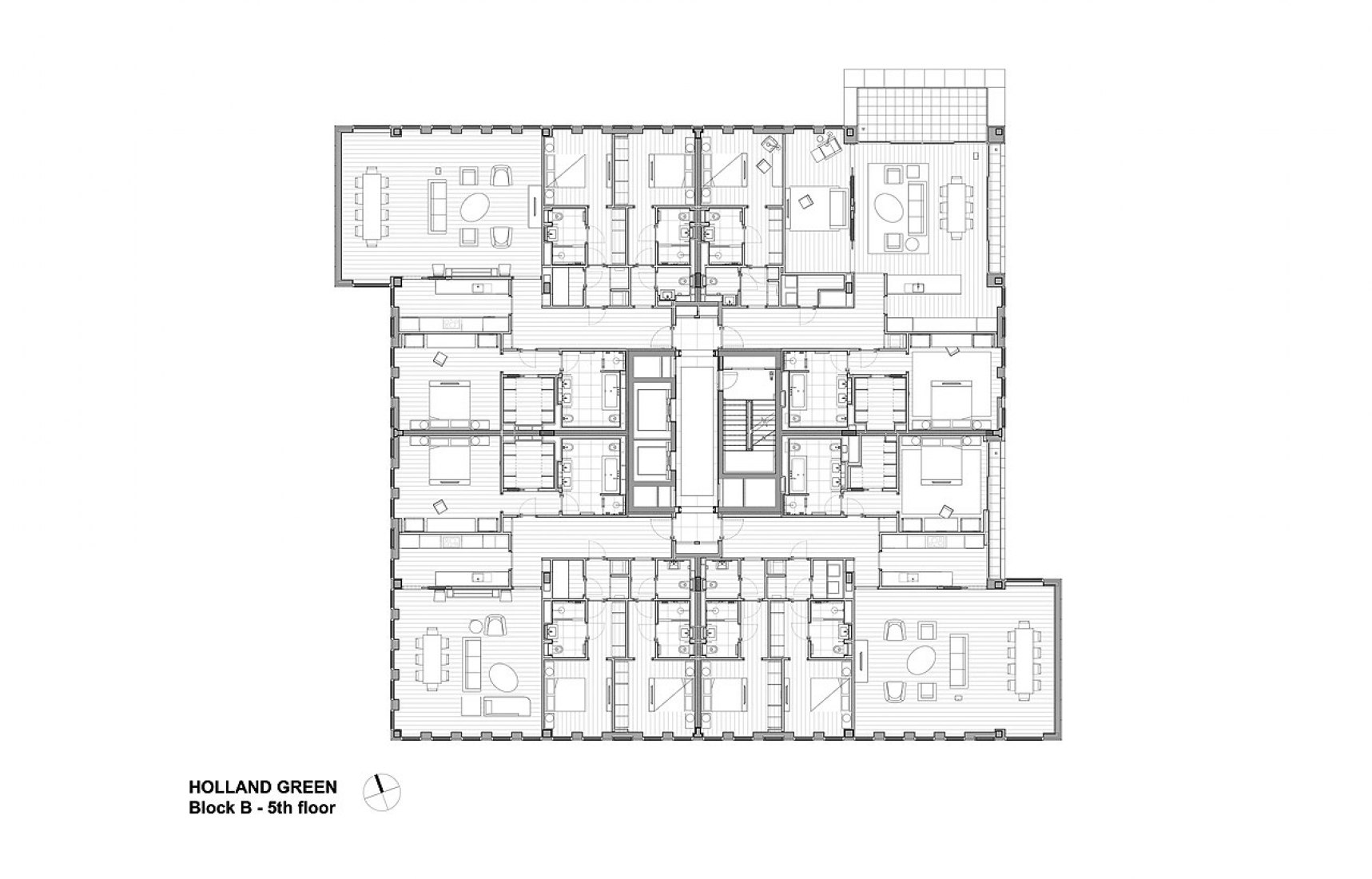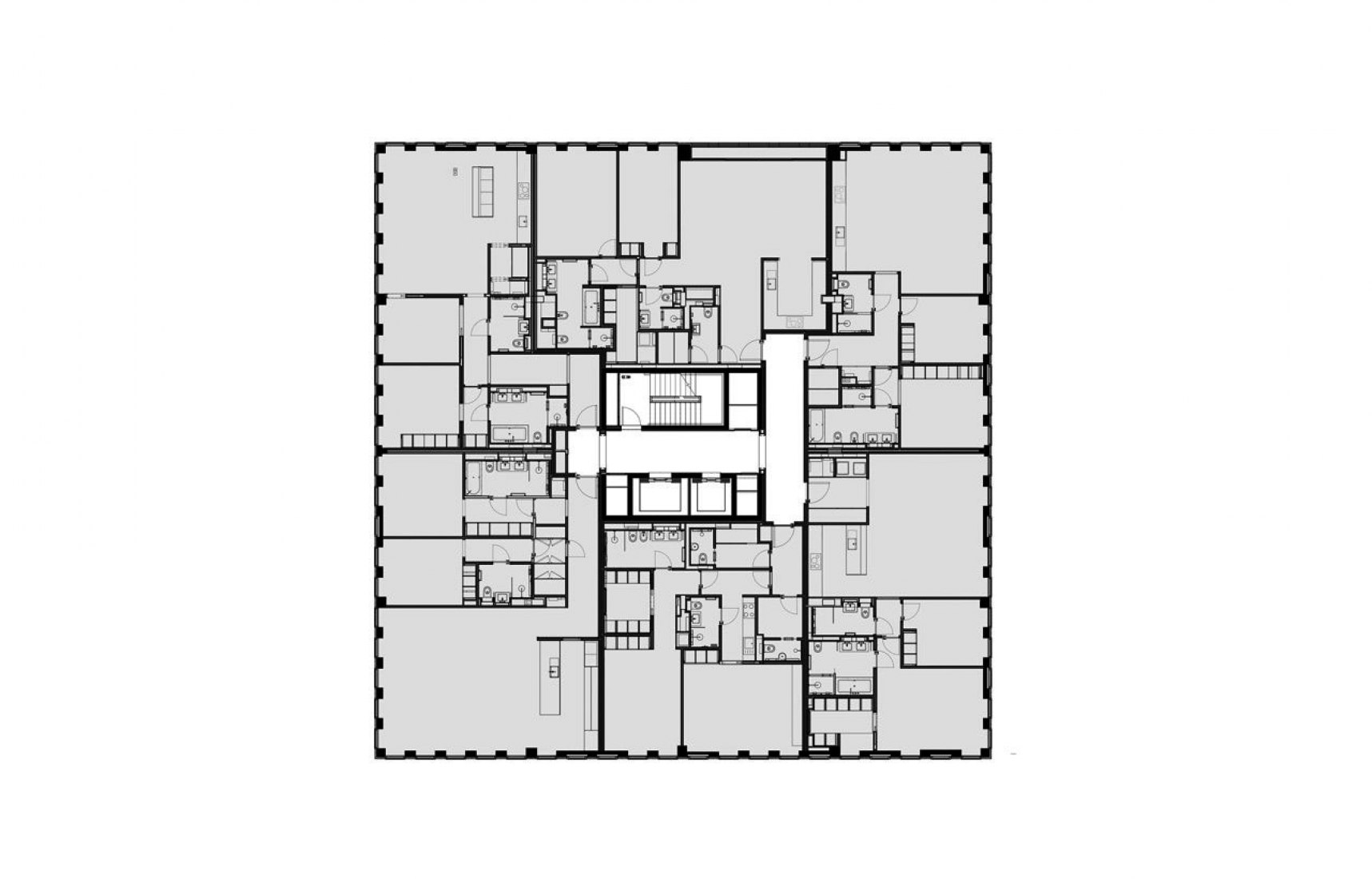Description of project by OMA
The Commonwealth Institute, by Robert Matthew, Johnson-Marshall and Partners, completed in 1962, marks the transition from British Empire to Commonwealth. Regarded as an important modern building by English Heritage, it was first listed in 1988, and again in 1990 for its special architectural interest. In 2002, only just after having undergone major refurbishment by Avery Associates (2000/2001), the building was closed to the public. In 2006, the government tried to delist the Commonwealth Institute, but failed, saving the building from demolition.
COMPETITION
In March 2008, after a short competition, OMA was selected from a shortlist of six international architects, which included Rafael Moneo, Rafael Viñoly Architects, Eric Parry Associates, Caruso St John, and Make Architects. The competition sought to explore the potential for a new use of the main exhibition hall and replacement of the administration wing (of lesser interest*) by residential development to help fund the refurbishment of the main hall.
URBANISM
In OMA’s proposal, the demolition of the administration wing is interpreted as an opportunity to liberate the main exhibition hall, enabling it to be appreciated as ‘a tent in the park’, in line with its original intention. The proposed residential buildings sit as free standing objects within the park landscape. Oriented to align with the exhibition hall, they aim to integrate the hall into an ‘ensemble of buildings’.
Within this ensemble, each building is scaled proportionally – like Russian Dolls – to react to the scale of its immediate surroundings: The front building, set back from the street to maintain the existing plaza condition, responds to the scale of the neighboring buildings on Kensington High Street. The largest of the three new buildings, tucked back within the site, concealed from both Holland Park and the High Street, corresponds to the height of Park Close’s two adjacent sixties’ buildings. The smallest building, fronting the park, mimics the height of the Parabola.
ARCHITECTURE
The calm, orthogonal geometries of the new residential buildings pose a deliberate contrast to the dramatic hyperbolic geometries of the exhibition hall’s roof. The facades of the new buildings register the amplitude of the roof’s curvature like ‘graph paper’.
The Commonwealth institute’s main exhibition hall will be the new home of the Design Museum, offering nearly three times the space of original location at Shad Thames, meanwhile dedicated to house Zaha Hadid’s archives. With the exception of the roof and it’s supporting structure, the building has been almost entirely rebuilt. A new basement has been installed beneath the full footprint, and the floors within have been rebuilt at new levels to accommodate the needs of the Design Museum. The outmoded 1960s facades have been replaced with energy efficient fritted facades, designed to resemble the original.
The refurbishment of the Commonwealth exhibition hall has been funded from revenue made from the residential development to the point that the Design Museum has been offered a for-purpose-building as though it were new, without the obligation to pay rent.
LANDSCAPE
Intended as a composition of free-standing buildings in a green setting, the design of the landscape is of primary importance. Its romantic character is intended to contrast with the angular geometries of the buildings, endowing the modern architecture with a deliberate ambiguity. Vehicles (as much as possible) are banned from the site, leaving the possibility of a landscape with almost seamless transitions between hard- and soft-scape.
Underneath, there is a continuous basement, connecting the three residential buildings and the Design Museum at a single service level. Car parking and storage space are provided for the residences with private access to each residential block, alongside service access to the Design Museum. This basement also houses a number of collective facilities for the residents, such as a spa sky-lit swimming pool, cinema, and gym.

